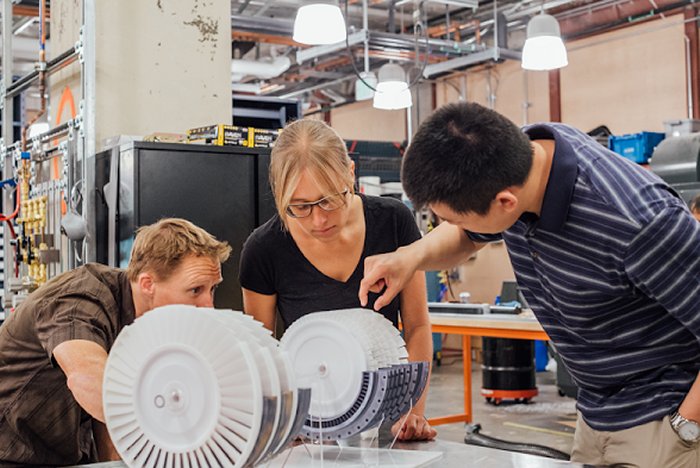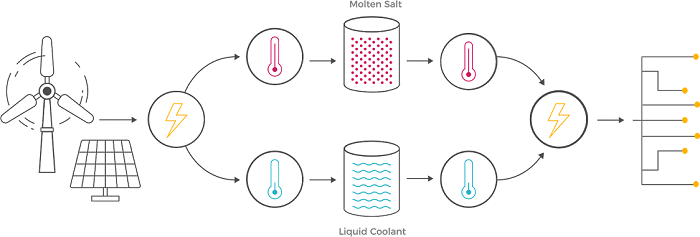
U.S. tech firm X is working on technology it says could compete on price with other current energy storage methods – and it’s approaching commercial prototype stage.
X was founded by Google in 2010 as Google X. These days it operates as a subsidiary of Alphabet Inc., Google’s parent company. X describes itself as a “moonshot factory”.
“Our mission is to invent and launch “moonshot” technologies that we hope could someday make the world a radically better place,” states the company.
A somewhat secretive firm, initial details have now been unveiled of an energy storage project X has been working on for two years – Project Malta.
Malta is based on the work of Nobel prize-winning Stanford physics professor Robert Laughlin, who designed a theoretical system able to store energy as heat in molten salt and cold in a liquid such as anti-freeze or hydrocarbons. Professor Laughlin has been engaged as a consultant for the Malta project.
Energy storage using molten salt is already being successfully used in solar farms, but in those applications the sun’s energy is reflected onto a central tower containing the salt and there is no “cold” component. Malta works differently.
How Malta Works
- Electricity generated by a wind or solar farm is sent to the Malta energy storage system
- This electricity powers a heat pump system that heats the salts and cools the anti-freeze
- When electricity is required, the temperature difference between the two is converted by a heat engine that drives a turbine.
The Malta system can be built close to the point of energy generation or nearby to locations where there is a high demand on mains electricity.
The company says while the system uses some custom-engineered components, much of what is needed is low cost and readily available. X states such a system would have a far longer operational lifespan than large-scale lithium-ion battery storage, with the tanks able to be charged and discharged for up to 40 years.
X says that after 2 years of CAD work and simulations, it now has detailed engineering designs that are approaching the stage of being turned into the necessary components.
The company’s next step is to construct a megawatt-scale prototype energy storage facility that could prove the technology at commercial scale, and is looking for partners to help it achieve this goal.
Read more about Project Malta.
Project Malta isn’t X’s only venture involving renewable energy. Project Makani is developing energy kites, a new type of wind turbine that can access better and more reliable wind sources that are found at higher altitudes. Project Loon is a network of balloons travelling at high altitudes using solar powered equipment to provide internet connectivity to people in remote and rural areas without service.


 RSS - Posts
RSS - Posts



Speak Your Mind